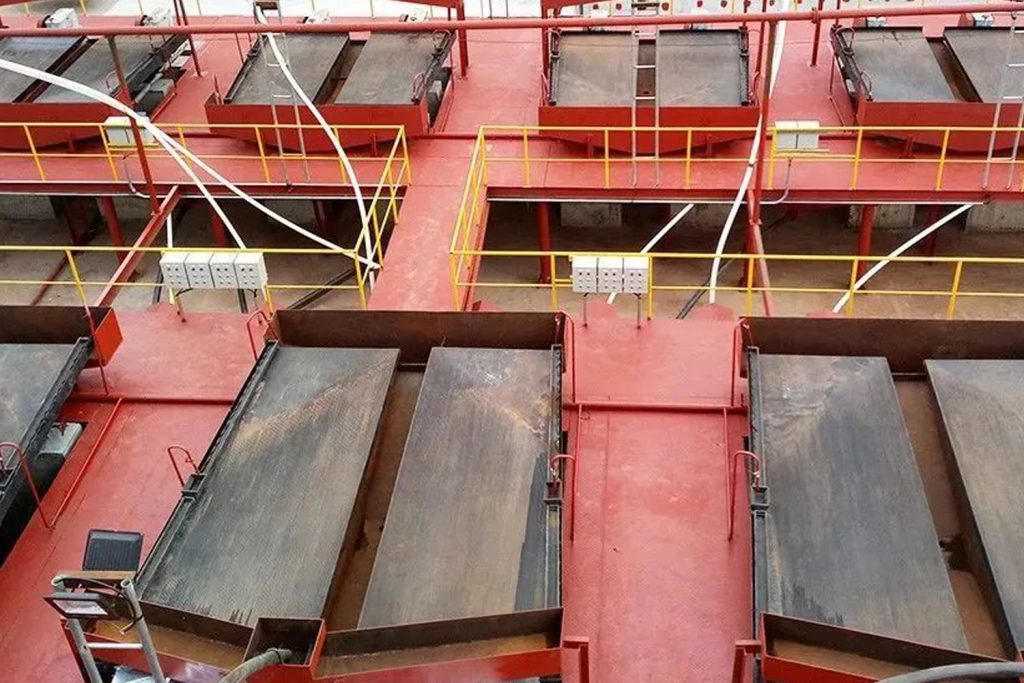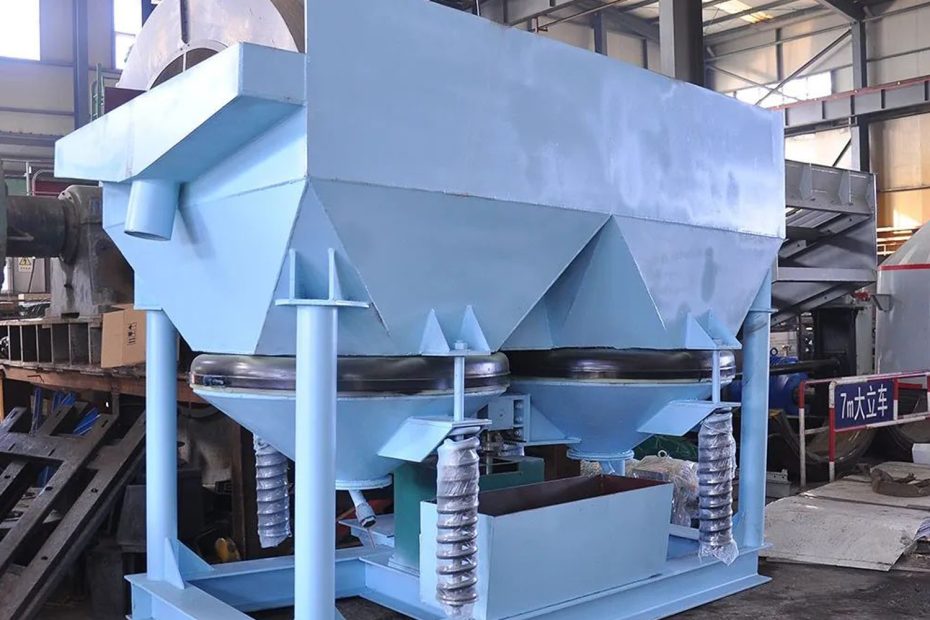Tungsten is one of the important metal minerals. Due to the high density of tungsten minerals, gravity separation is an important separation method for wolframite group minerals and scheelite group minerals, and is widely used in tungsten ore processing plants.
Tungsten ore gravity separation is a highly effective and widely used method for separating valuable minerals from gangue minerals based on their differences in specific gravity. The process involves utilizing various equipment to exploit the varying densities of different minerals, allowing for effective concentration and recovery of tungsten ore.
The Gravity Separation Process
Gravity separation is a physical separation process that relies on the differences in specific gravity between minerals. The principle is based on the fact that heavier minerals tend to settle more quickly under the influence of gravity, while lighter gangue minerals are carried away by flowing water or air. By exploiting these differences, valuable minerals like tungsten ore can be effectively separated from the ore matrix.
The process involves several stages, including crushing and grinding the ore to a suitable size, classifying the particles based on size, and finally, subjecting the ore to gravity separation using specialized equipment.
Mineral pressing for Tungsten Ore Gravity Separation: three major categories of equipment
The main gravity separation equipment for tungsten mineral processing includes jig, shaker, spiral chute and so on. This article will take you to understand the use of different tungsten ore gravity separation equipment.
Jig Machine
The jig machine is important equipment for tungsten ore gravity separation. It utilizes the pulsating motion to separate minerals based on their density differences.
Jig machine is one of the important equipment for wolframite gravity separation. The three-stage jigging separation is a relatively common tungsten ore jigging separation process, which divides all tungsten ore into three grades: coarse, medium and fine. Among them, the upper limit of the coarse-grained jigging separation particle size is 13mm, generally 8mm- 10mm, the particle size range of medium-sized jigging separation is 1.5-5.mm, and the tailings of coarse and medium-sized jigging separation are regrinded and re-selected. The particle size of fine-grained jigging separation is below 2mm, and the tailings of fine-grained jigging separation are separated by shaking table after hydraulic classification.
Generally, the recovery rate of coarse and medium-sized jigging operations can reach 65%-75%, while the recovery rate of fine-sized jigging is relatively low. The main reason is that fine-sized tungsten minerals mostly exist in the part with a particle size below 0.074mm. It is easy to be lost in the tailings, so the jig is usually used as a roughing equipment for rough concentrate.
There are various types of jigs used in tungsten ore gravity separation, including bottom-moving cone jig, top-moving moving screen diaphragm jig, side-moving diaphragm jig, etc. The jig machine is more suitable for the separation of tungsten minerals with a coarse particle size of 4.5-10mm and a medium particle size of 1.5-4.5mm. The side-moving diaphragm jig is more suitable for processing tungsten minerals with a particle size of 0.074mm-0.5mm.
Shaking Table
The shaking table, also known as the Wilfley table, is a gravity separation device that uses asymmetric reciprocating motion to separate minerals based on their specific gravity and particle size. It is widely used for the concentration of tungsten ore.
The shaker plays an important role in the beneficiation of tungsten ore. It has a high enrichment ratio. After one shaker separation, high-grade concentrates and tailings can be obtained, and minerals of different densities are separated on the bed. Obviously, simultaneous access is possible. However, due to problems such as large floor area and low processing capacity, the shaking table is often used as a beneficiation equipment in large tungsten concentrators, and can be used as roughing and beneficiation equipment in small tungsten concentrators.
Shaking tables commonly used in gravity separation of tungsten ore include 6-s shaking table, Yunnan tin type shaking table, spring shaking table, etc. The effect of using 6-S shaking table for coarse-grained tungsten ore of -2+0.2mm is better. For fine-grained tungsten ore with a particle size of less than 0.2mm, it is better to use a Yunnan tin shaker. The bed surface of the shaking table also has a variety of materials to choose from, including raw lacquer bed surface, rubber bed surface, glass fiber reinforced plastic bed surface, etc. Different materials have different frictional forces generated by the movement of tungsten ore, and the glass fiber reinforced plastic bed surface has a better selection. Effect.
In addition, the surface of the shaking table is generally equipped with ribs or grooves, and its height and shape also have an important impact on the sorting of ores with different particle sizes. The grooved ribs are straight, single-wave, and double-wave. The number of slivers in a single tank determines the particle size of the selected minerals. Generally, the more slivers, the finer the particle size of the selected minerals.

spiral chute
The spiral chute is ideal for processing tungsten ore with a particle size of 0.3-0.02mm. It efficiently separates minerals with varying specific gravity, allowing for precise concentration.
The spiral chute has a relatively simple structure, a large processing capacity per unit area, and does not require power. It is often used in the gravity separation stage of black and white mixed tungsten ore in tungsten ore beneficiation. The spiral chute not only has the function of sorting, but also has the function of grading and desliming. It can be selected at a wide particle size level, simplifying the re-selection process.
The spiral chute can also be divided into spiral chute and rotary spiral chute. Under the same sorting conditions, the processing capacity of the spiral chute is larger, and it is more suitable as a roughing equipment for tungsten ore.
In conclusion
The above is the gravity separation equipment for tungsten mineral processing. In actual production, the selection of gravity separation equipment for tungsten ore is mainly based on its technological process. The specific selection needs to be determined by comprehensive economic and technical indicators. economic benefits.
